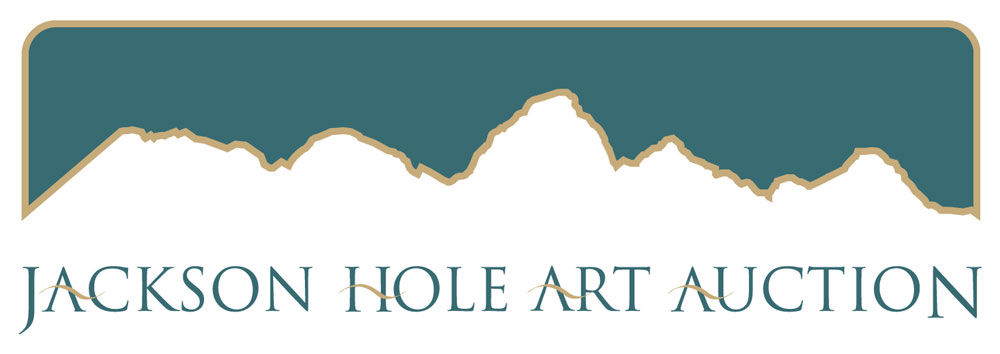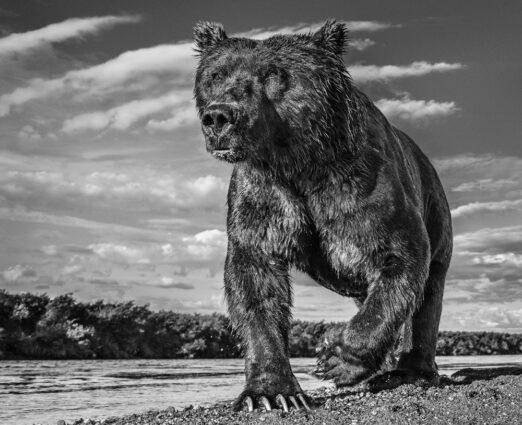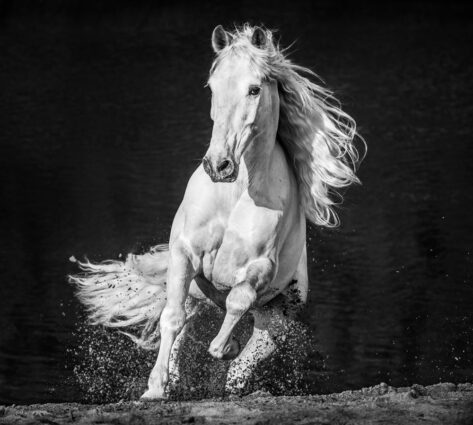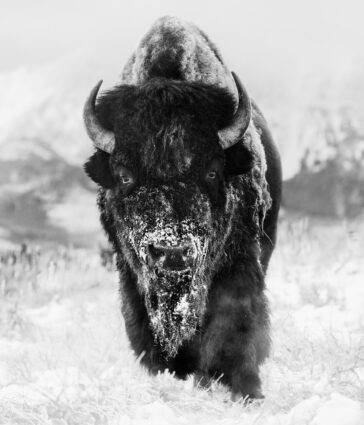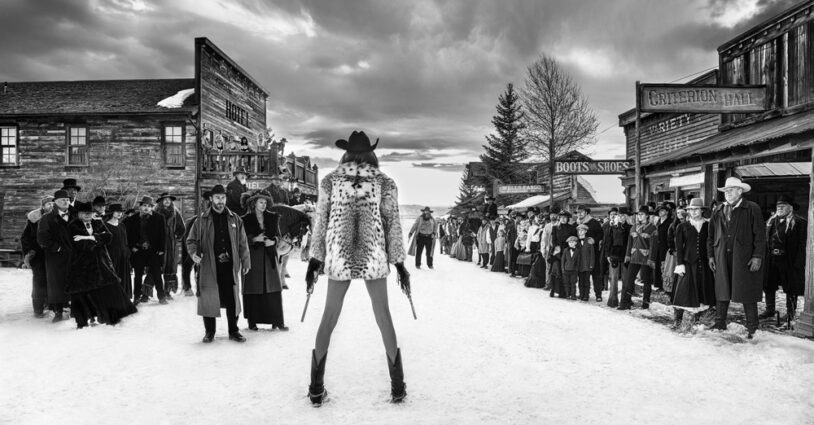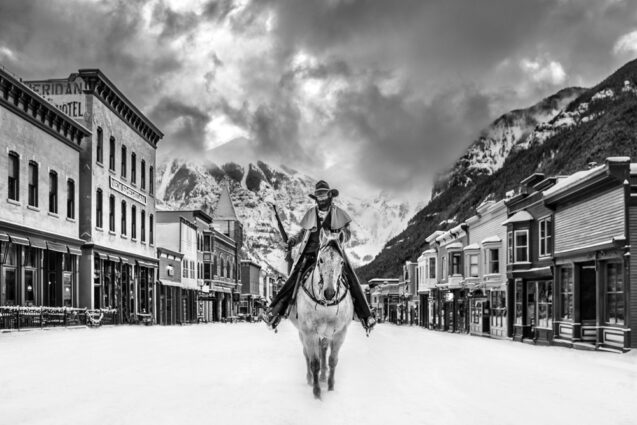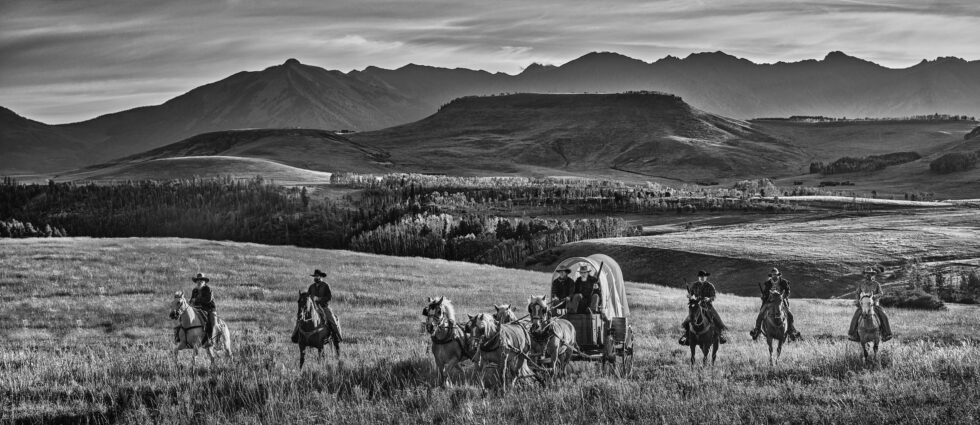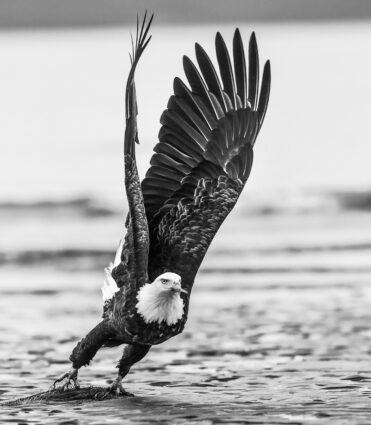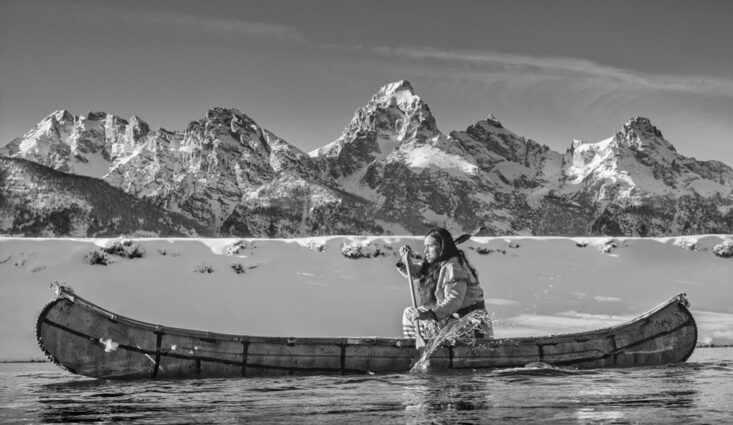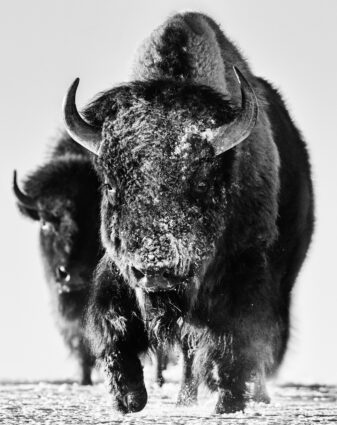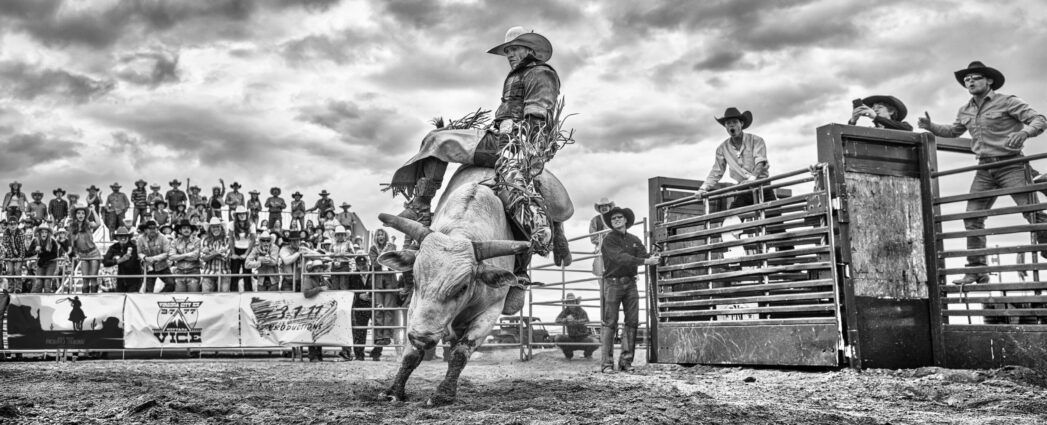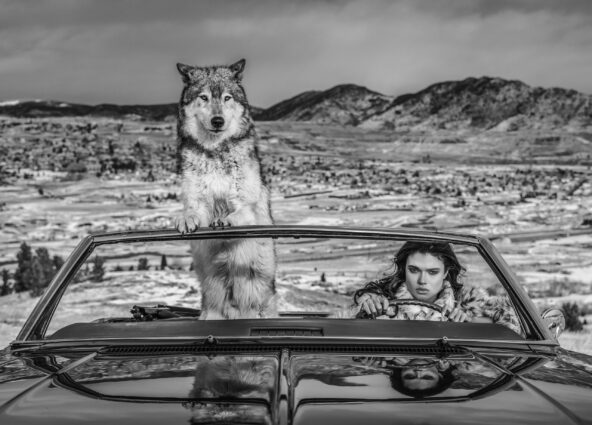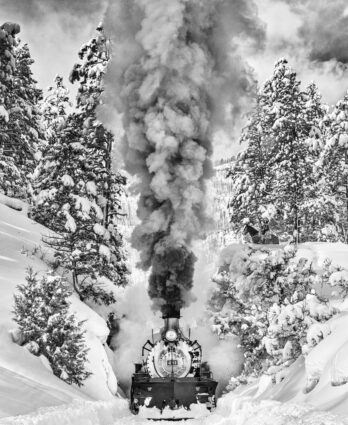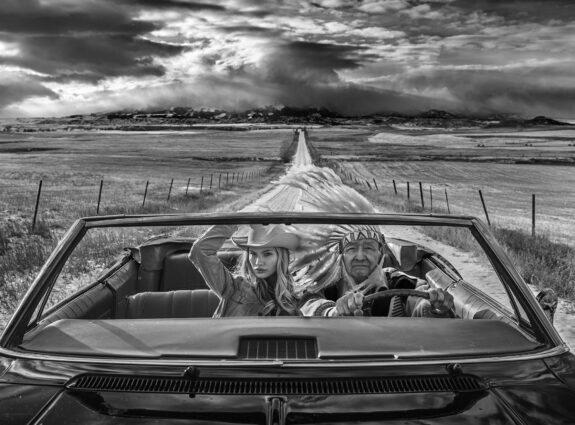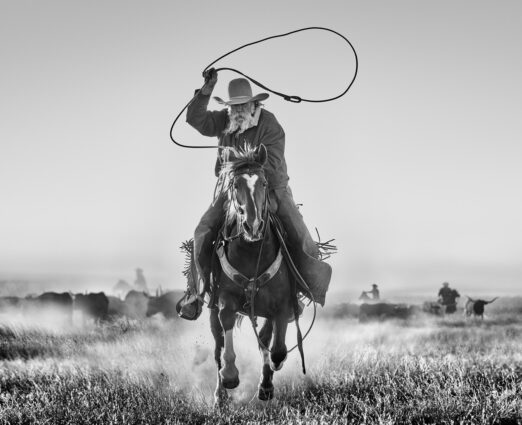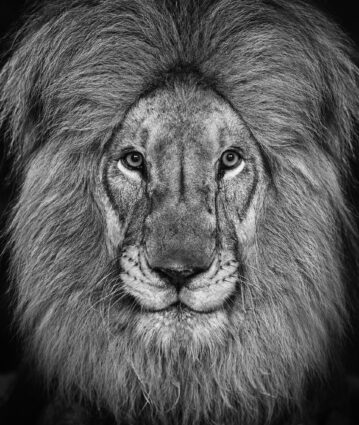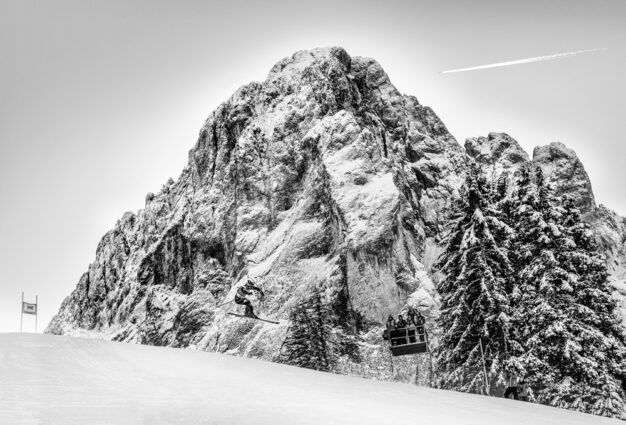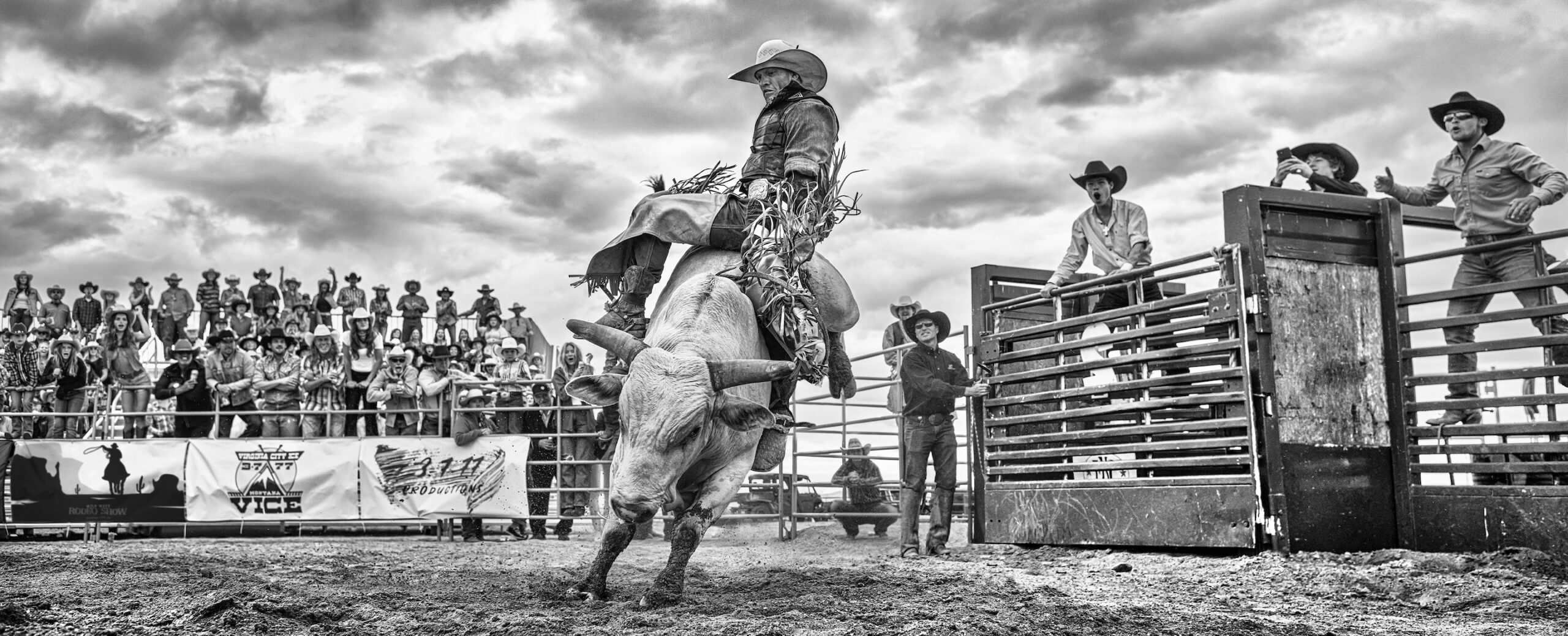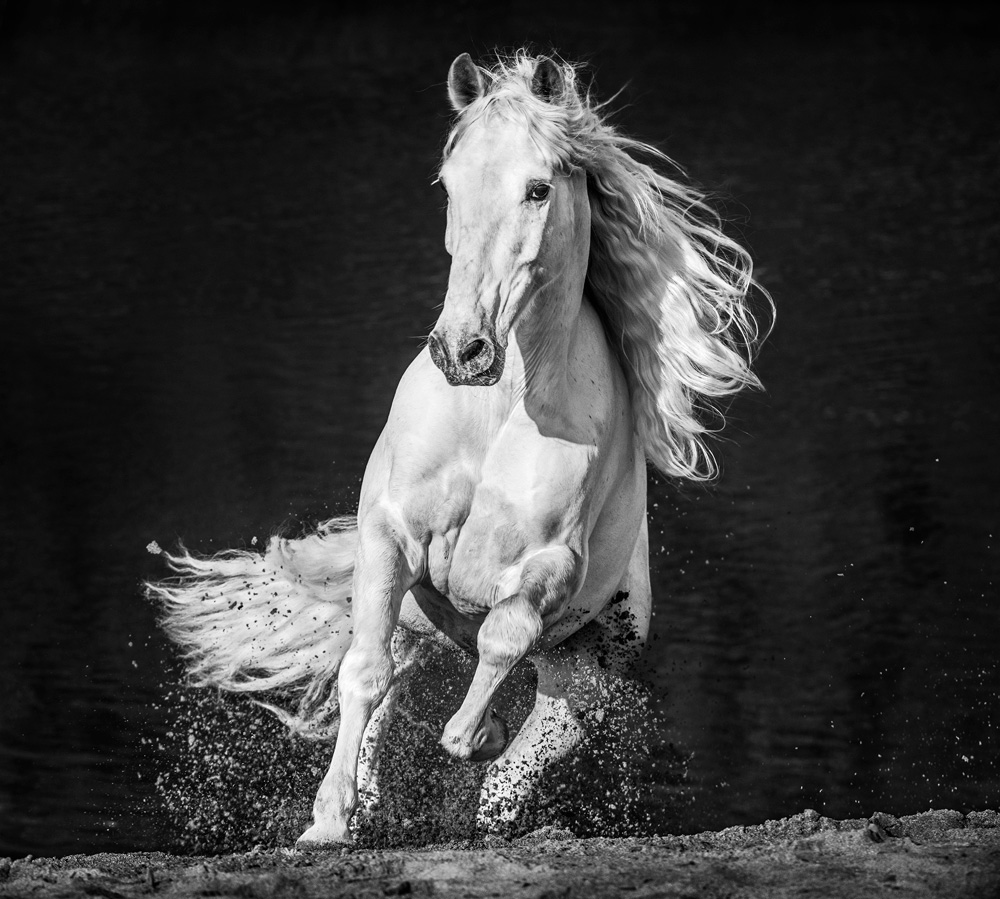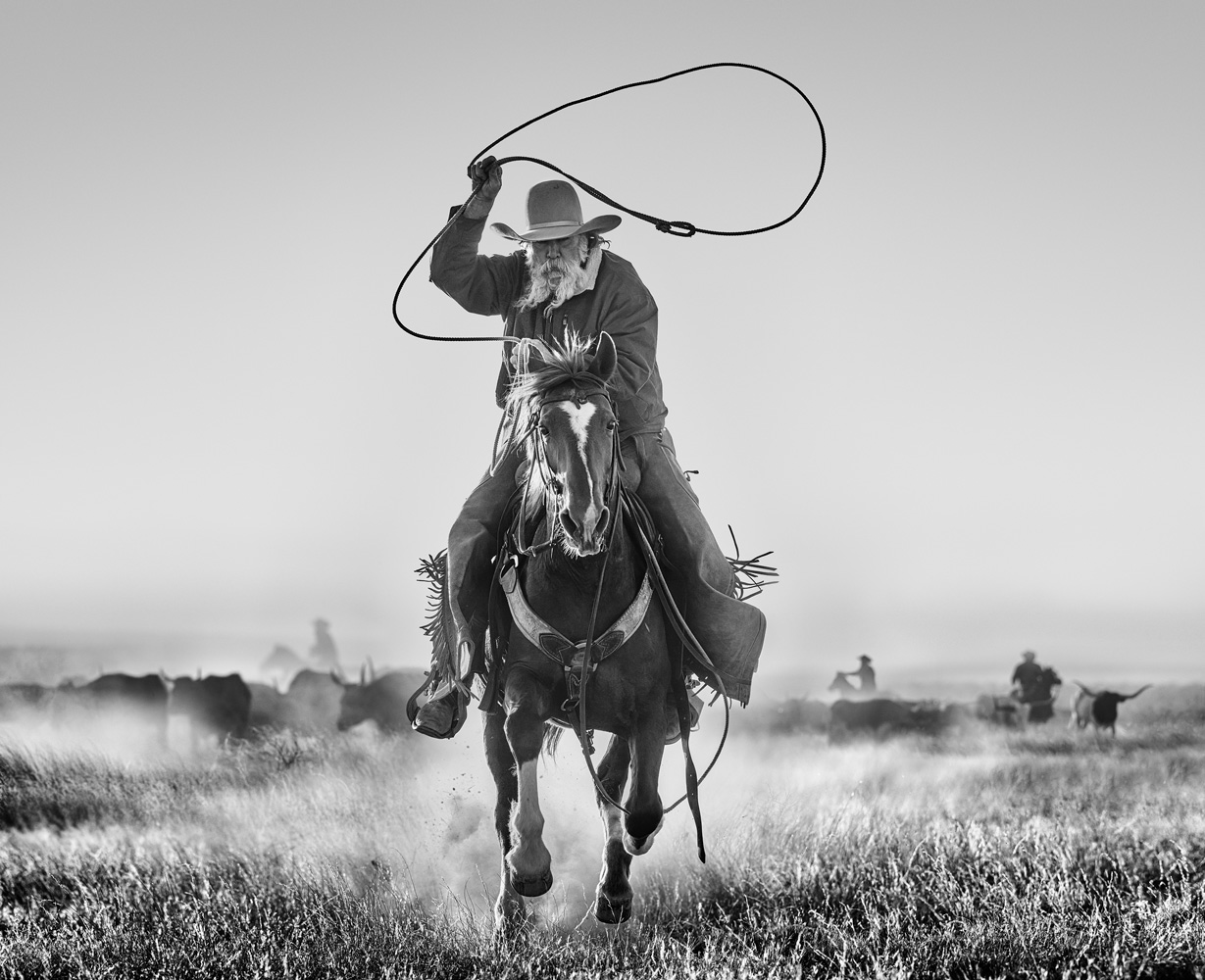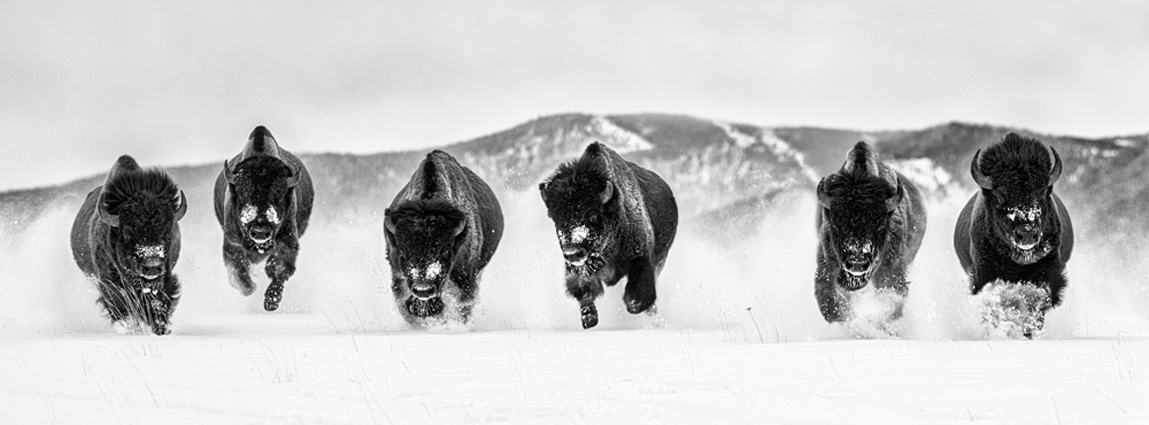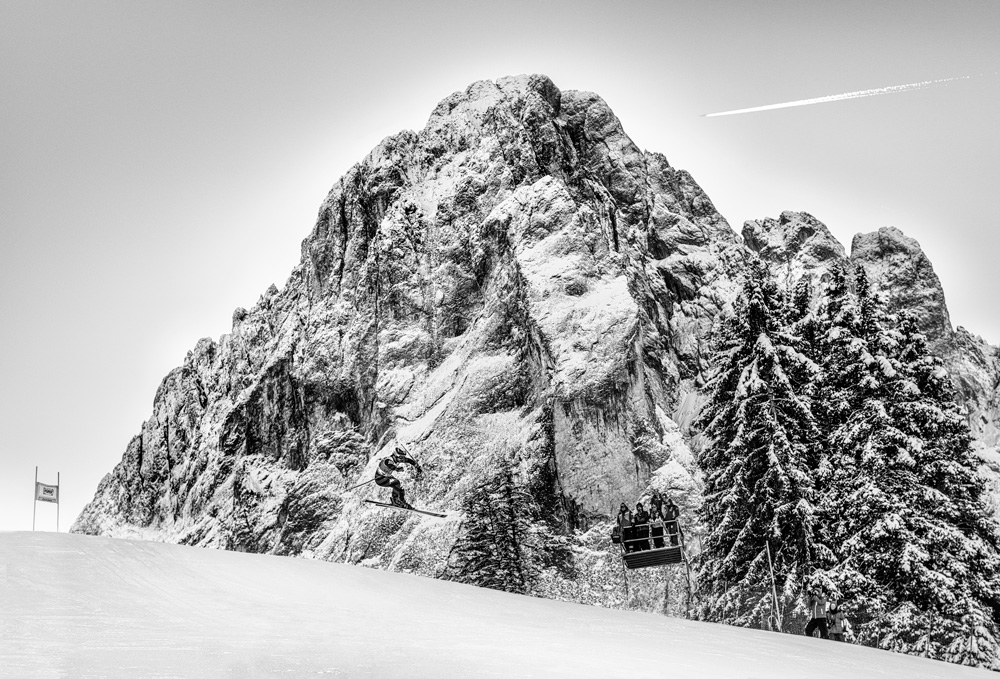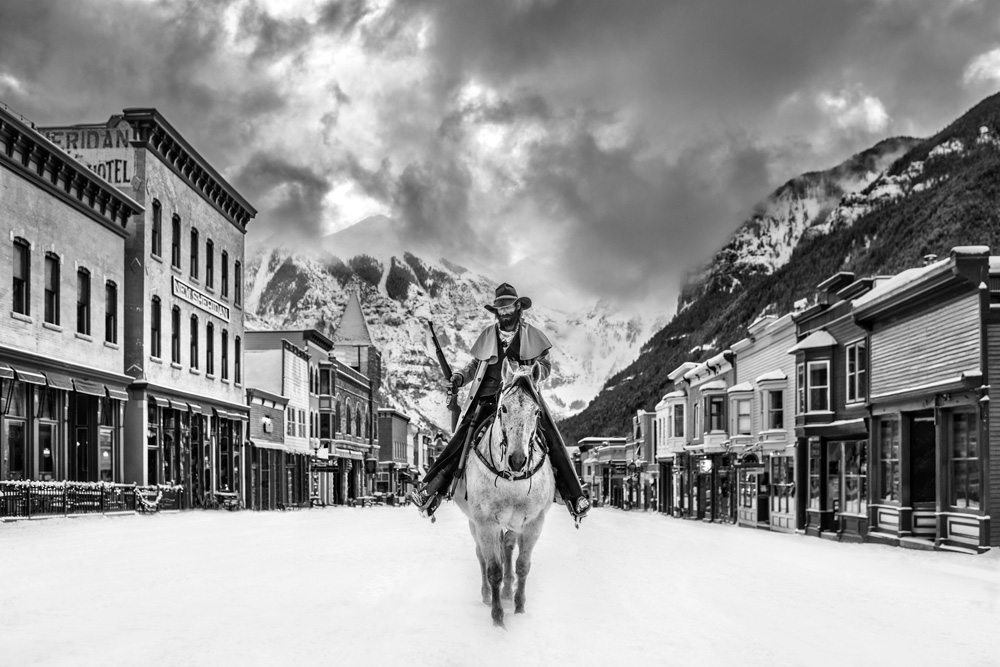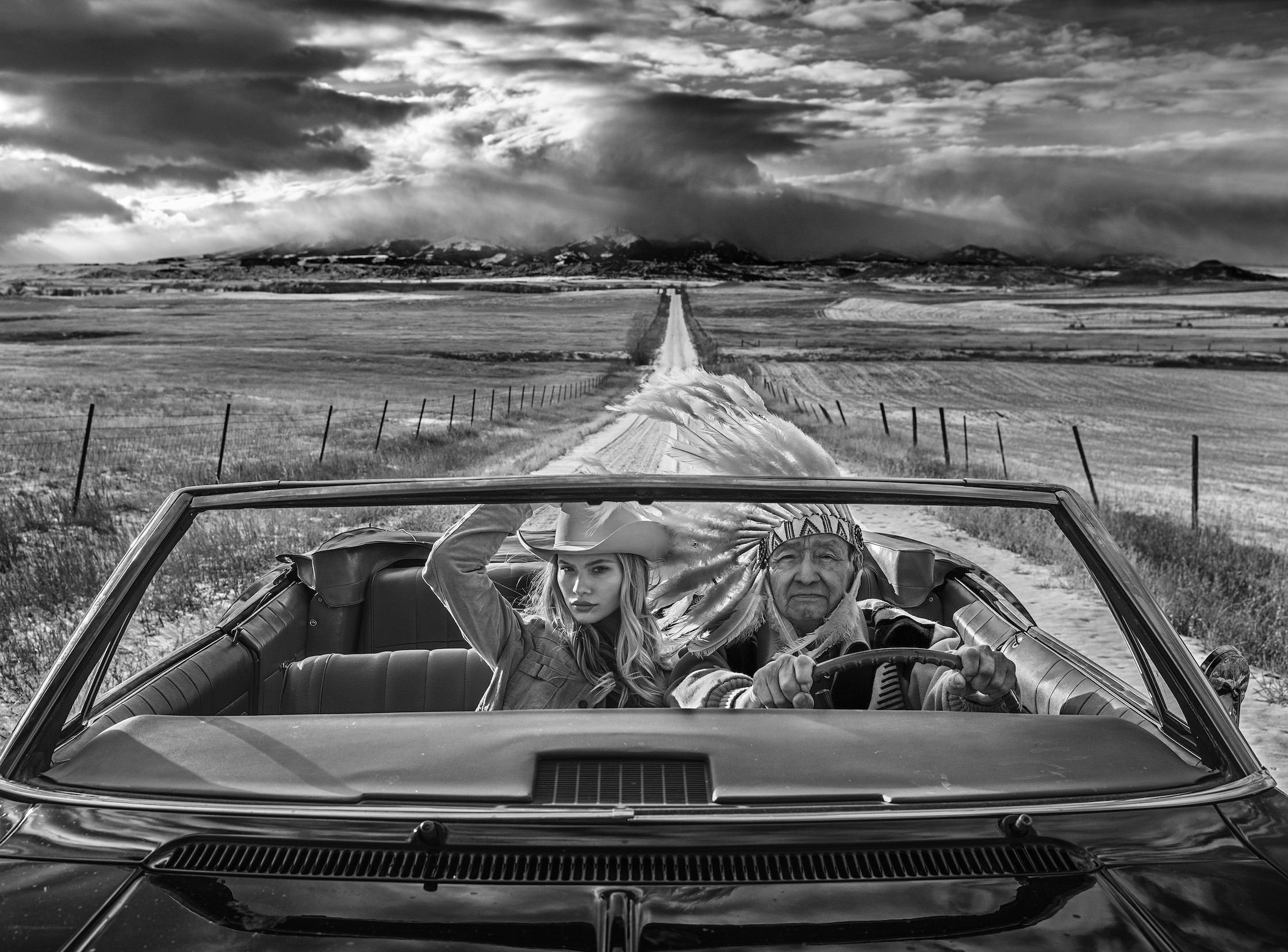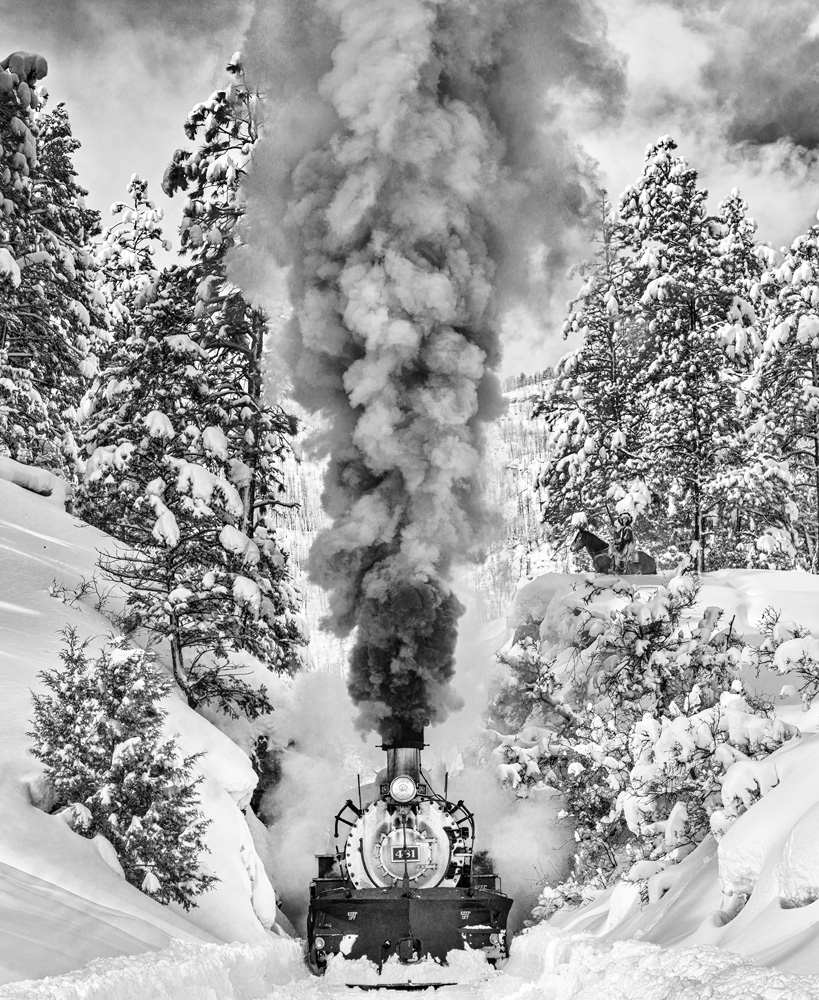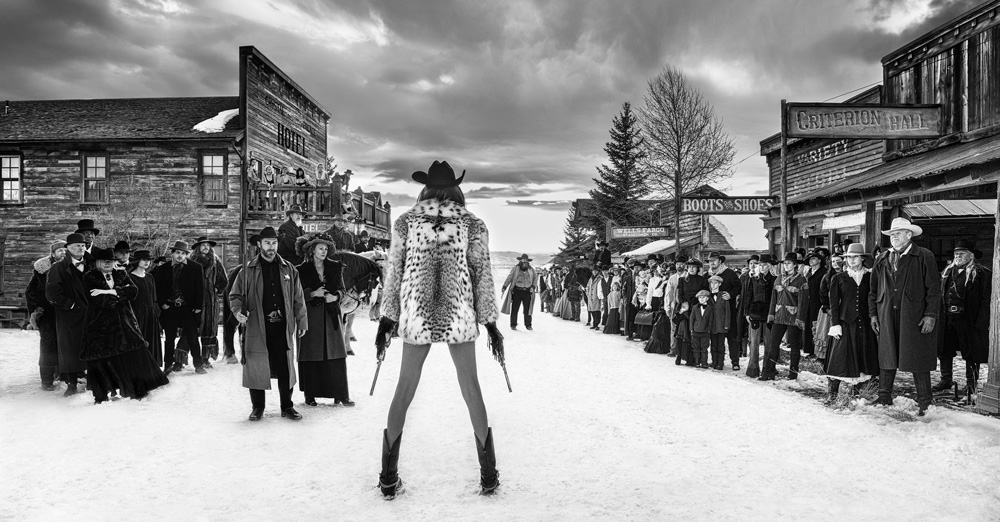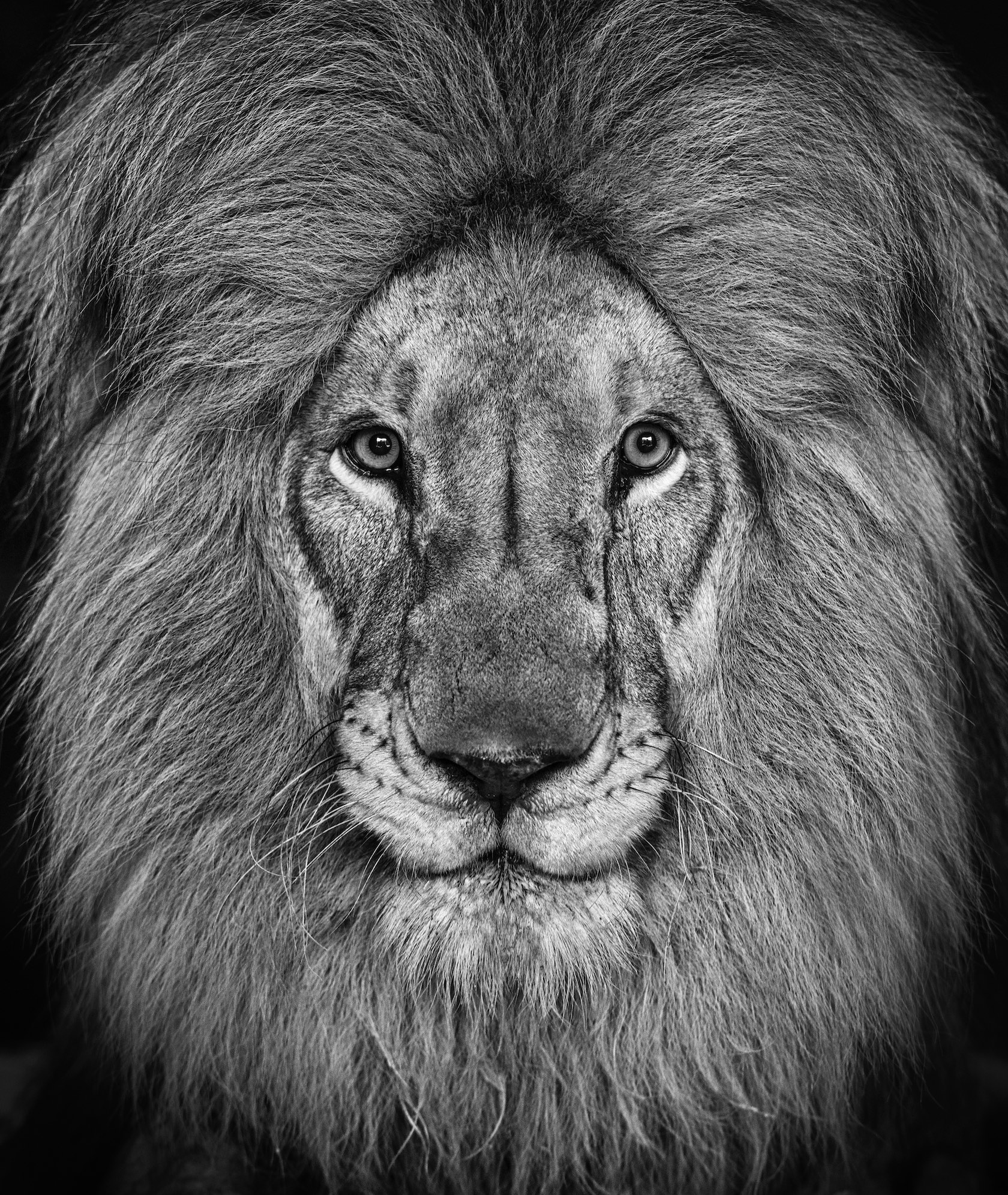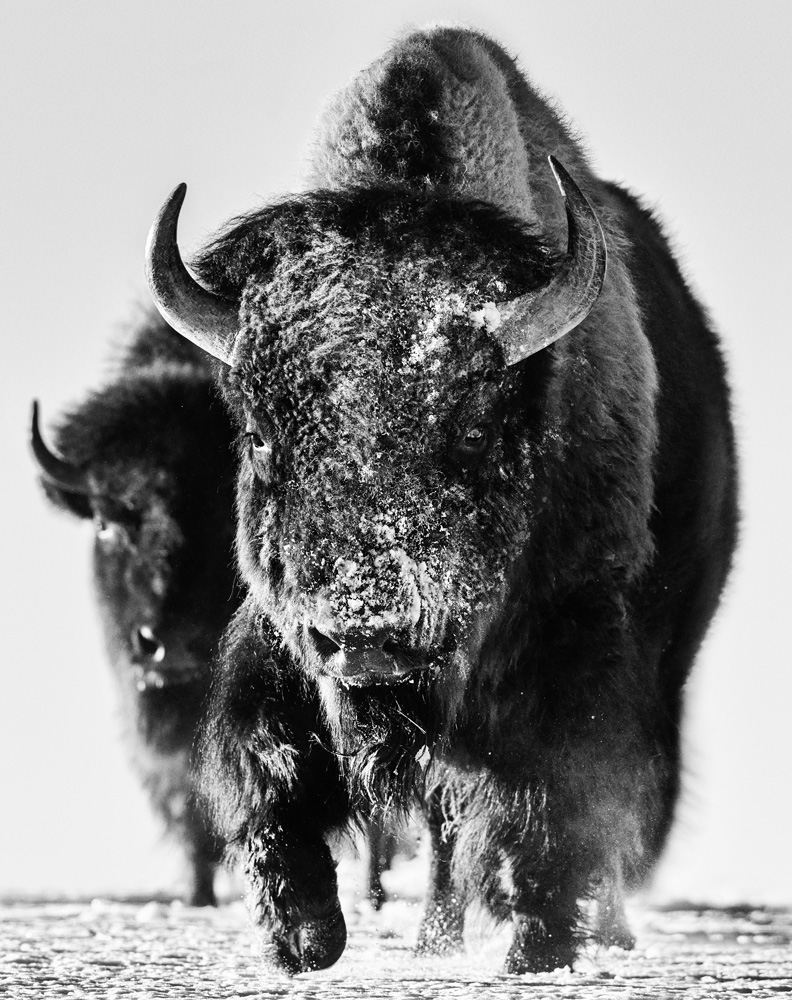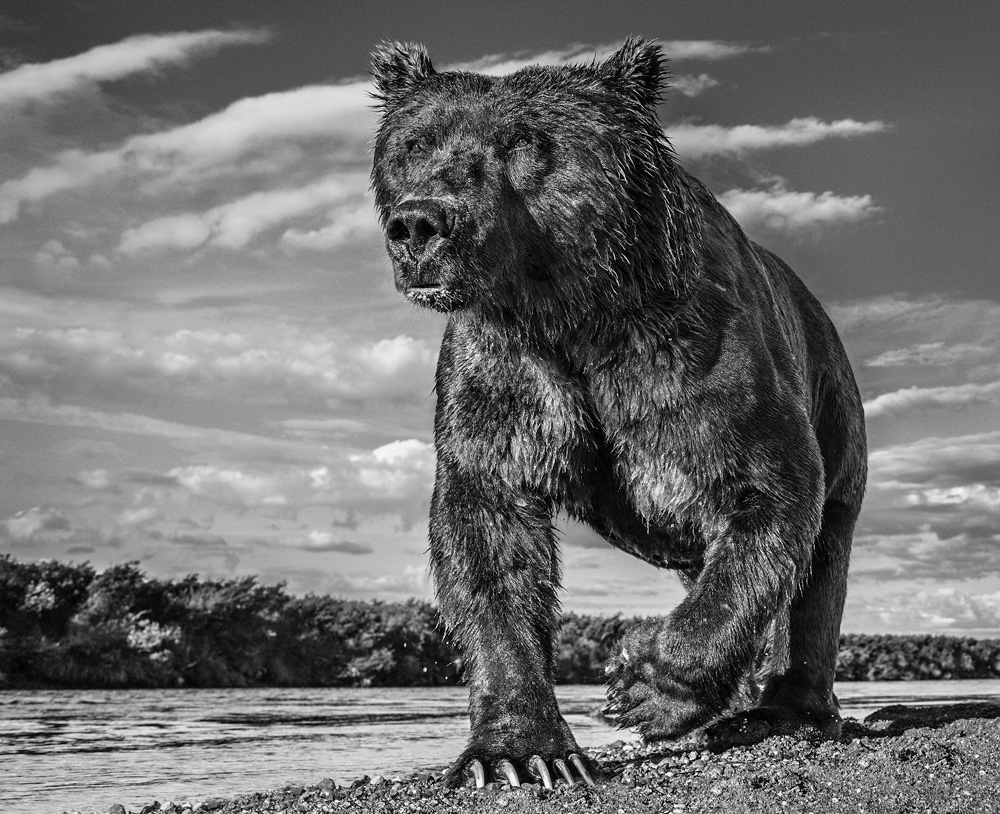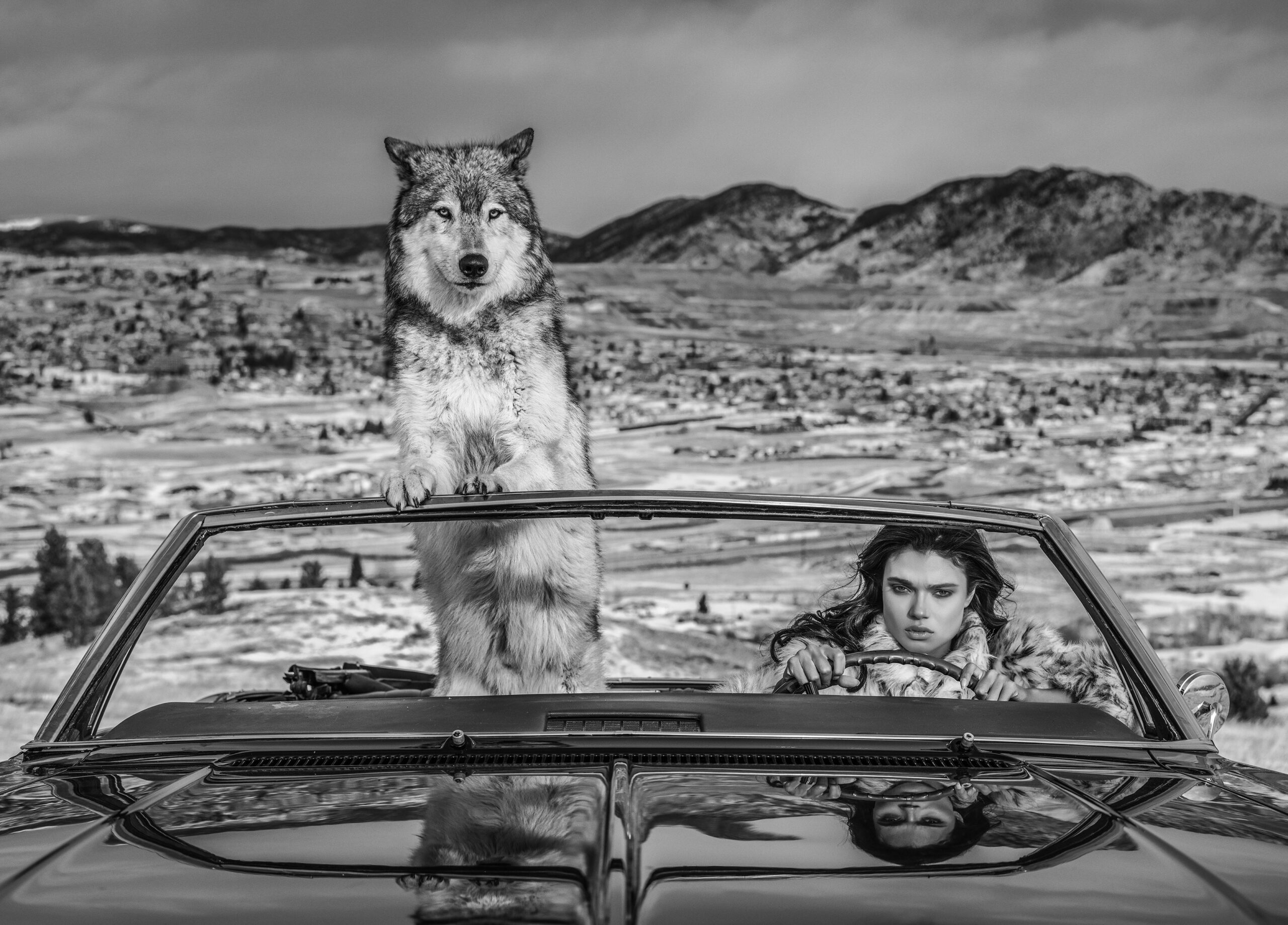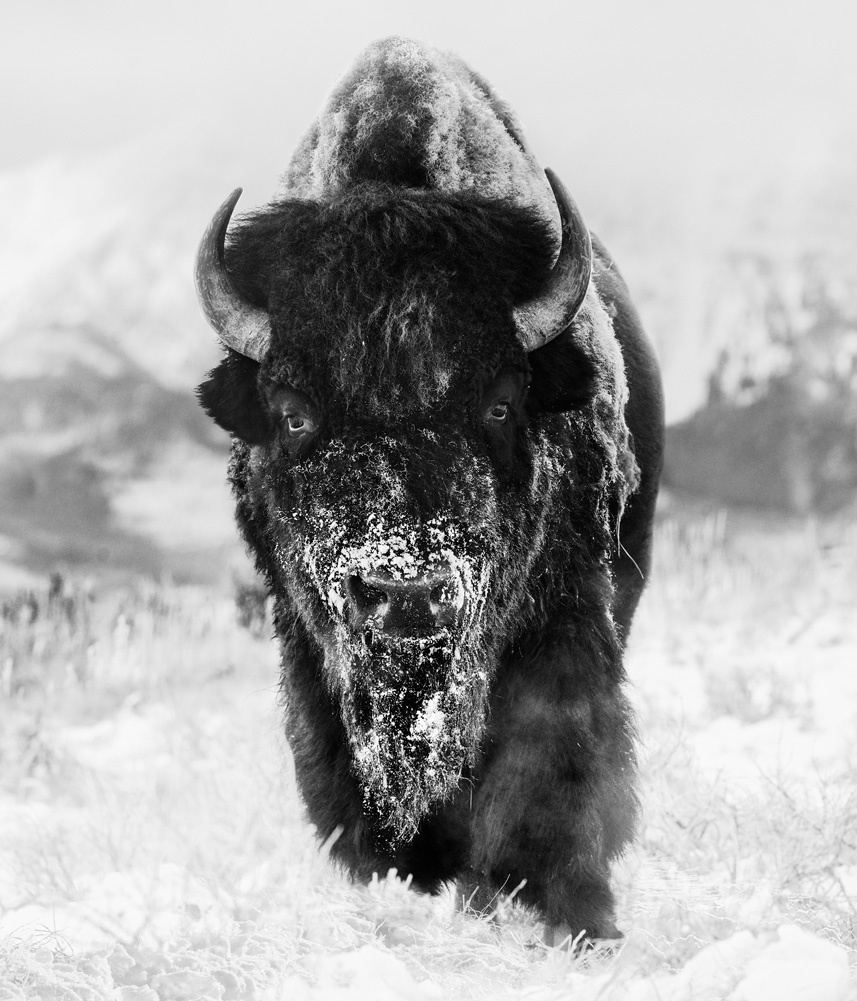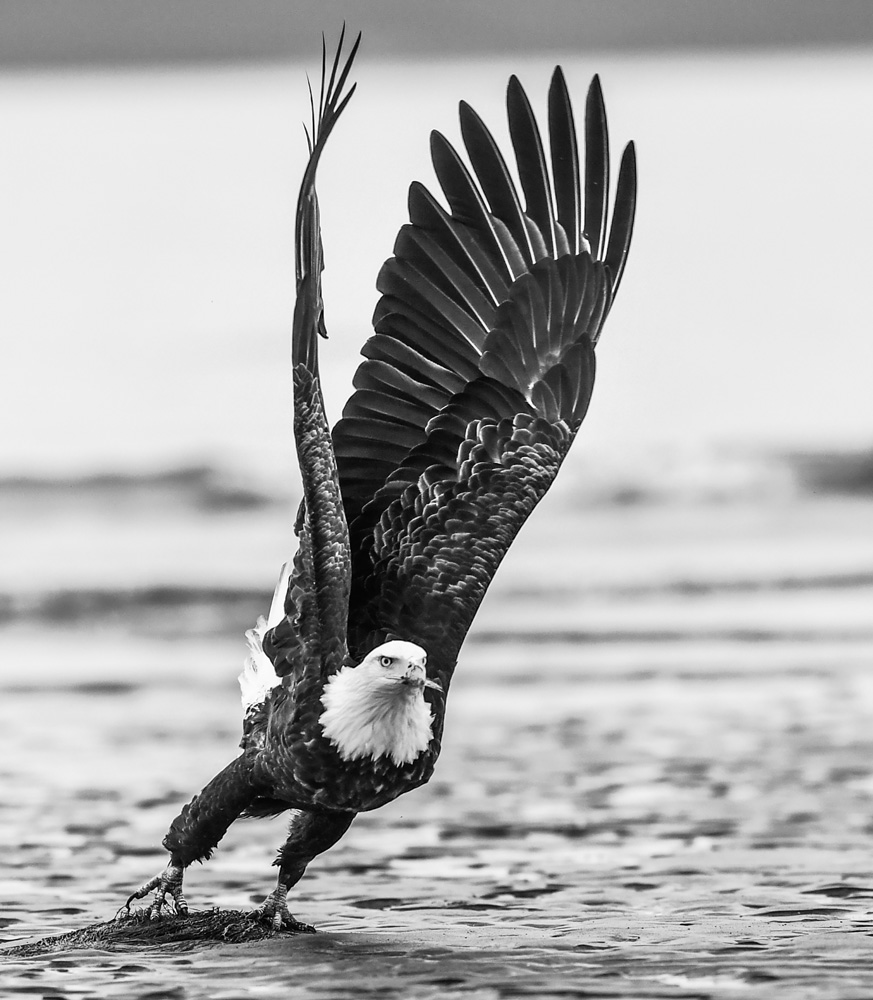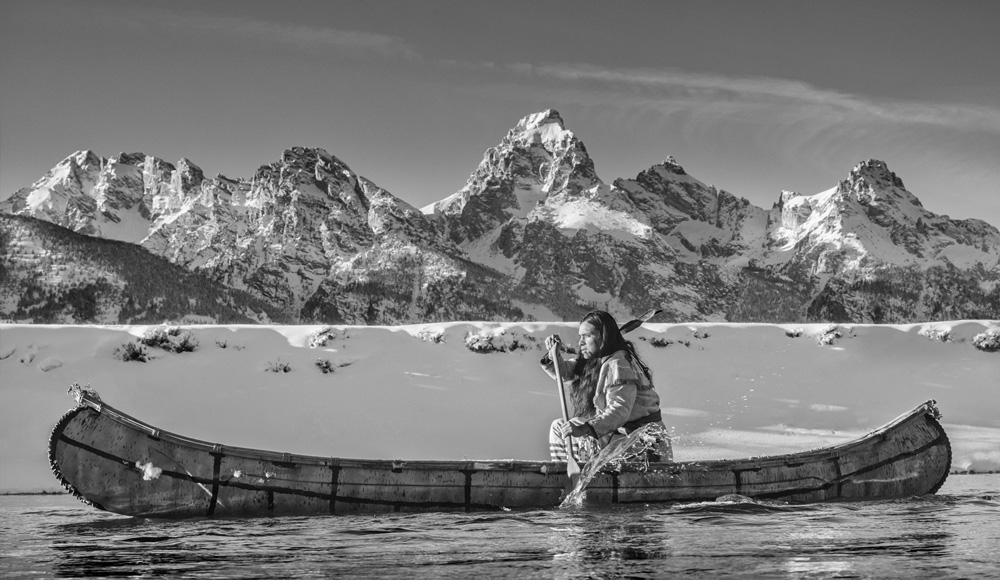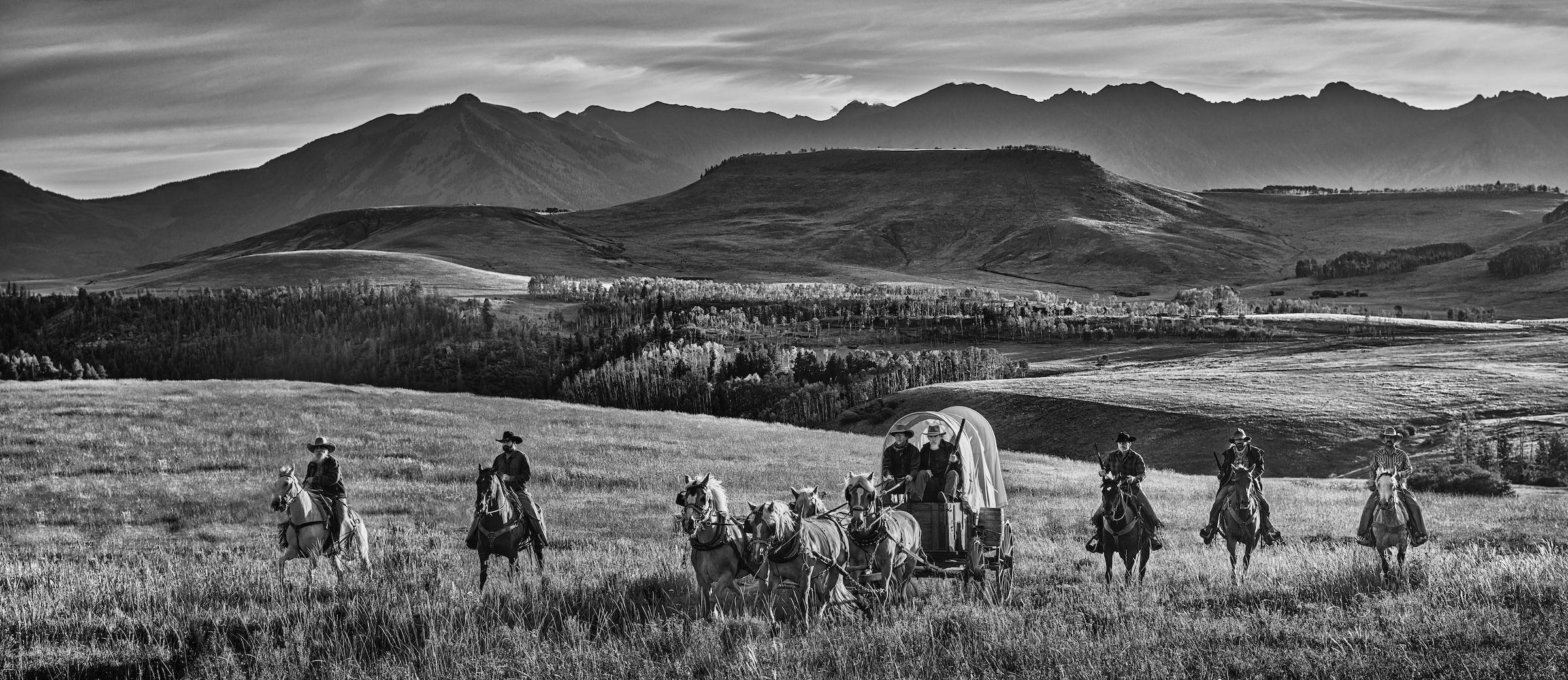DAVID YARROW
David Yarrow was born in Glasgow, Scotland in 1966. He took up photography at an early age and as a 20-year-old found himself working as a photographer for The London Times on the pitch at the World Cup Final in Mexico City. On that day, David took the famous picture of Diego Maradona holding the World Cup and, as a result, was subsequently asked to cover the Olympics and numerous other sporting events. Many years later David established himself as a fine art photographer by documenting the natural world from new perspectives and the last nine years have been career-defining.
David Yarrow’s photography is evocative and immersive capturing life on earth and has earned him an ever-growing following amongst art collectors. His large monochrome images are distinctive and on display in leading galleries and museums across Europe and North America. He is now recognized as one of the best selling fine art photographers in the world and his limited edition works are regularly seen at Sotheby’s and other auction houses.
All of David’s prints are limited edition and signed, editioned and dated by David.
AVAILABLE WORK
RODEO
archival pigment print
edition 4 of 20
45 x 89 in. framed
Montana, USA – 2023
Rodeos are events for the community as much as they are events for the individual performers. No matter the riding skills and bravery of the competitors, they are only part of the story, not the story itself. The action is simply the reason for the gathering and it is ultimately the gathering that is remembered. Rodeos are a celebration of a way of life and are an integral part of Americana. Some States such as Montana, Texas, Wyoming and Colorado would lose much of their identity without these local gatherings.
When working on this idea therefore, I knew that a single frame would fail if there was not a sense of occasion and a wider context. This normally requires a wide-angle lens and this can work against capturing the action in an immersive and detailed way. The champion riders have a formidable skill set and my sense was that this should be celebrated as well.
To offer both context and detailed action within a ring, is a challenge and looking over scores of old rodeo images, most photographs tended to achieve one or the other, but not both. The only way I could see around the riddle was to work from a cage inside the ring and hope that the action would come close enough to my wide-angle lens. To work from outside the ring would leave any image very loose unless I was incredibly lucky.
In my mind photography is often about collaboration; it is indulgent to consider it to be a singular profession and the credit for this photograph goes to the nearby community and its rodeo team, as much as it does to the person behind the lens. Every single person played a role and that is why the image can be looked at for a long time. Some of the facial expressions are fantastic and there is a palpable sense of place.
I remain in awe of the bull rider that day; that is quite a skill to possess.
Devon, England – 2020
The stallions I worked with on this shoot in Devon are magnificent. Front on and in full flight, they are full of muscle and yet at the same time exude elegance. I can’t think of another animal that manages this balance so well. Little wonder their aesthetics have been the focus of artists for centuries.
James Watt – the Scot who invented steam engines in the late 18 century – figured out a mathematical way to equate horses to engine power. Thus the term horsepower was invented. Looking at this image, I understand why he chose a horse.
West Texas – 2023
In my experience there is no more enduring symbol of Americana than a working cowboy. Cowboys on the ranch are tough and they probably don’t come much tougher than West Texas Cowboys. Our dear friends in Montana, Wyoming and Colorado may disagree, but when our team think of cowboys, we find it difficult to take our visual processing too far away from our experiences in West Texas. What a most unique part of contiguous America, West Texas is and no doubt will always be.
I like to shoot against the light most of the time; it lends interest, depth and emotion. But is also tests camera technique and thereafter the whole monochrome printing process, especially when I am filming almost head on into low light. I do this to have the kicked-up dust backlit and energised. 10 degrees further away from the sun may seem small, but the difference is palpable and I prefer to be bold and keep the camera as close to head on as possible. There is always a chance – a glimpse – as my fellow Scot, Harry Benson would say. But it’s best to have low expectations.
I started darkroom printing in a converted darkroom at my family home near Glasgow when I was about 15, but I am really no more of a printer, than I am an astronaut and I am deeply lucky to have a 10-year partnership with our extraordinary printers in Los Angeles. We know each other so well and they can turn a decent picture into a great picture. That is a process that must surely be central to a photographer’s heart.
The Flying D Ranch, Southwest Montana, USA – 2021
The concept of this photograph has been on my wish list for many years. A group of male bison charging through heavy snow, directly towards a camera is certainly a rare sight and it always seemed a bridge too far from almost every perspective. The question has always been where and how could this epic scene unfold in front of a camera?
Yellowstone National Park was never going to be the answer. This sort of collective behaviour does not tend to happen in the park and if it did, there would be zero chance of being in the right place at the right time to film it. It is difficult to break new ground in Yellowstone.
In 2020 an American artist, John Banovich, an exceptional talent and good friend, suggested that I approach Ted Turner to see if I could gain access to his stunning 180 square mile ranch – Flying D – saddling Yellowstone and neighbouring Big Sky. This remarkable place is nine times the size of Manhattan and showcases Montana at its most stunning best.
John’s wonderful painting of a group of running bison adorns the wall of the main reception of the exclusive Yellowstone Club and he took his inspiration from spending time at Ted Turner’s ranch. I recognised that this was a link worth pursuing. Flatteringly, a few months after my initial approach, the Turner team agreed to collaborate in the hope that we could raise money for Ted’s conservation initiatives. Ted Turner is one of America’s biggest landowners and also one of its most acclaimed conservationists and he reintroduced both bison and wolves into Flying D, one of his three Montana ranches. In mid-winter, his team of ranchers will herd some of the 5,000-resident bison into areas where feeding is easier and this controlled activity creates an opportunity to work a situation. Just like cowboys herding their cattle in Texas, the skill sets of the Turner ranchers in deep snow are a privilege to watch.
The difficulty is that bison in this vast ranch are more skittish of humans on foot than their Yellowstone cousins, who see thousands of tourists every day. I therefore needed either to be camouflaged or out of sight as they made haste in my direction. Luckily the Flying D team knew of a group of rocks behind which I would be obscured from the bison’s line of sight.
After many a failure, and some adjustments to the approach, one gorgeous winter morning in February, we achieved what we set out to do. It was a real team effort and I want to thank John Banovich and the whole Turner Corporation team at the Flying D.
In my early career, I photographed competitive ski races around the world. At events such as the Olympics in Calgary and the World Ski Championships in Crans Montana, the downhills were the Blue Riband events and the Hahnenkamm in Kitzbühel and the Lauberhorn in Wengen, classic one-off downhill races, were regular fixtures in my January calendar.
But the goal on those occasions was to take tight action pictures of the winning skier, not necessarily to evoke a sense of place. It was a genuine test of camera skills not only because of the speed of the racers but also the accompanying weather conditions. I had my successes and I had my failures, but the photographs often lost immediate relevance as the press would simply look forward to the next race rather than dwelling on the last one.
35 years later my goal for this project was to employ a broader narrative and play on a sense of scale and contrast; the constant grandeur of our planet against the ephemeral skier. I wanted to tell a tale of man and mountain, where the former is dwarfed by the latter and in so doing, I could hopefully glorify both. The skier could have a degree of anonymity as he was just part of the story, not the whole story.
I know my ski courses and had my mind set on this spot on the famous Val Gardena downhill in the Dolomites. The first jump, a third of the way down the course, gave me the chance to have a skier flying through the thin alpine air with the region’s highest mountain offering the most grand of backdrops.
I had great fortune with the heavy snowfall the night before the race, as it transformed the whole amphitheatre, including the imposing rock face, into a fresh winter wonderland.
Jared Goldberg – a member of the US ski team and a resident of Salt Lake City, Utah – is the skier in this image. He finished in the top 10 that stunning day in Val Gardena. I am in awe of his bravery, as I am with all downhill racers. They put life and limb on the line in their 100 mph journey.
In my mind, the TV tower and the aeroplane add to the narrative as they serve to add modernity and scale, and in so doing, highlight the magnificence of the timeless mountains.
I would like to thank Alessandro Trovati of AP for his help with this project and for guiding me down the mountain.
Telluride, Colorado, USA – 2021
As we search the length and breadth of America for shooting locations, we are drawn to roads that lead the eye but are then halted by something monumental. This formula offers a closed end theatre from which to tell stories.
The best urban example of this is perhaps La Salle Street in Chicago, which concludes with the Chicago Board of Trade. It is one of the most iconic views in any American city and, of course, Chicago is the showcase of American architecture. Sam Mendes made full use of this in “The Road to Perdition”.
Forrest Gump Point in Monument Valley is the American West at its majestic best and offers the same narrative of a journey’s end, albeit amidst the towering monoliths of Arizona.
But perhaps my favourite setting for this box office effect is the old mining town of Telluride resting at 9,000ft in the mountains of southwestern Colorado. I would contend that looking east down Main Street on a clear day is one of the most visually thrilling sights in all of America. There is a timelessness to the street with the grandest and most imposing of backdrops.
Of course, Telluride is now a glamorous Ski resort and my instincts were to shoot here in the winter; the mountain pops with the snow and if the weather cooperates, there can be the whitest of canvases to play with at street level.
The problem for film makers is that the main street of Telluride can only be shut off from the public on a Sunday morning and only then for a couple of hours. We arrived on set a few days before and the weather got warmer and warmer. The snow in Main Street became slush and then disappeared totally. Saturday was spent sunbathing and cursing our luck, but then at about 5pm, storm clouds started to gather and by 8 pm, there was a full-on blizzard. We were overjoyed, but also concerned that if the storm continued until the morning, the mountain would be hidden and the moment lost. Without the mountain, there is no picture.
At 6.45 am, with the team in position, some breaks appeared in the cloud and then around 7.15 am, I had my moment. We could not have wished for more. This picture is up there for me. Perhaps luck is, indeed, the residue of design.
Durango, Colorado – 2023
When we shoot in the winter, weather plays a large part in our planning, but given the speed at which weather can change, it does not pay to be too prescriptive too far out from shooting days. But we continually check weather patterns and within 36 hours of a shoot, we tend to home in on a certain plan.
In my experience, there are basically five weather possibilities in the winter: flat light and no recent snow, which is a little dull; melting snow and sunny, which is horrid; cold and sunny, which is better but restricts filming time; a snowstorm, which is exciting, but can impair detail or, ideally, the end of a big snow fall.
In the Rockies, I guess there are about a dozen days a year when a big storm passes through and clears, leaving behind a winter wonderland and kind gentle light. This is the film maker’s big opportunity, provided the props are in place and access is still possible. It is always challenging, but these are the days we wait for. They don’t come that often.
We know the Durango to Silverton steam train well and have built up a strong friendship with the owner Al Harper and his wonderful team of engineers in Durango. I sensed there was an opportunity at this jaw dropping location made famous by its appearance some 50 years ago in Butch Cassidy and the Sundance Kid. We were in town and waiting as the storm system pushed through. It had lasted 36 hours and left 18 inches of new snow in the San Juan Forest that the old steam train cuts through.
We had to operate fast, as the light was picking up all the time and both teams worked quickly to get everyone in position early in the day. The Native American and the horse had the toughest job – that was no easy brief that day.
When I look at this photograph, I feel some sense of pride, it is a hell of a shot. But not pride in myself, pride in all the people that made it happen. A real team effort.
Montana, USA – 2022
In my experience, the most visually pleasing, single street, wild west towns in America are found in the states of California, New Mexico, Colorado, Arizona and Montana. There are no real secrets here, which is why film studios tend to focus on five or six specific locations.
There is a skew in my work towards shooting in Montana for two reasons: firstly, I have a far more established network of contacts and friends in Western Montana than in the states further south who can all help me find extras or indeed sometimes jump onto set themselves; secondly, our Montana locations are exposed to the highest snowfalls, and I like to work in the snow, it simply adds another layer of narrative, especially in monochrome images.
This photograph, shot near the Crazy Mountain at the old Marlboro Ranch in Montana, incorporates the greatest number of extras I have had on set during a shoot – about 120 all in. The logistics in the cold are challenging and then the execution of the idea requires precision as I want to see as many faces as possible, and I want those faces to have a collective attitude. It seemed necessary to have women and children in the scene as if the whole town was watching the shoot out – this would not be a male-dominated western vignette.
In order for the concept to have symmetry, I needed to incorporate the buildings on both sides of the street, and this is where – at the margin – this location is the best I know because the street is narrow enough for a wide panoramic.
I always say to the cast ahead of workdays involving many people, that all it takes is one person to be looking the wrong way or behaving oddly for the photograph to be ruined. They are all being paid to focus and concentrate for no more than five minutes during the day, but those are a big five minutes. The cast that day, from old to young, were brilliant and that is why this photograph works.
There is a lot going on in this work – which is why I love seeing it in as large a format as possible.
59 x 52 in. framed
South Africa – 2022
Most tight portraits of lions, including mine, disappoint either because the camera is above the lion’s eye, or the distance between camera and subject is further than one would like or perhaps the lighting conditions compromise the textural detail. In most cases, it is all three of these issues and this is no surprise as lions do not live in studios and are also extremely dangerous.
The opportunity to take this portrait of the most handsome lion in Kevin Richardson’s sanctuary in South Africa came about because of the cave that we had built for our Daniel project. There was just one source of light from the opening behind my cage and by the time the light reached Yame’s face it was even and kind. This allowed me to glorify the detail in a lion’s face in a way that I have never previously been able to do.
My preference is for his look to be head on and symmetrical. I knew that even the most marginal of compositional imbalances would have a visual impact and the key was to be patient and retain concentration at all times. If I put the camera down, or had a breather, there would be every chance I would lose the moment of a true 180 degree face off.
The result makes me happy. It conveys regality, beauty and wisdom – all leading characteristics of adult lions. They are the Kings of Africa and I think in those precious moments in the cave, Yame had quite a lot to tell me.
edition 10 of 12
62 x 52 in. framed
Western Plains, USA – 2023
I only photograph bison in the snow. It is their toughness that defines them and their thick coats seem to make so much more sense on a bitingly cold winter’s day. They are not the easiest of animals to film and every year in Yellowstone there is at least one incident of a bison charging a park visitor who has got too close or has been in the wrong place at the wrong time.
This picture was taken in the plains of America, as opposed to somewhere heavily regulated like Yellowstone and the big bull moving speedily in my general direction offers a different and fresh perspective from my previous work with this beast of an animal. These type of immersive, ground up photographs are only possible when working in collaboration with seasoned ranchers and we would not recommend this angle of view in most bison situations. They are unpredictable animals and when spooked, they can be deadly.
I like to convey size and scale in all that I do. I always feel a need to communicate clearly whatever the subject and this approach is embedded in the creative processing.
This adult male bison weighs over 1000kgs – so about the same weight as 10 American footballers together. He is a monster of an animal and I think the second bison in the distance helps to give a sense of this.
Alaska 2017
Over the years, I have spent many days working close to grizzlies in Alaska and this is surely my most visually arresting photograph. The intimacy is courtesy of a well-positioned camera and a 28 mm wide angle lens. The bear was big, primeval and menacing, and in this instant, just two feet from the camera.
Moraine Creek is not an easy destination to get to for first light, but that was our preferred schedule. The weather forecast was for unrelenting sunshine, unusual for Alaska, and we had little appetite to work on the river with a high summer sun above us.
We were on site just after dawn and the remote camera was positioned after studying the fishing pattern of the big male bear. I prefer to photograph against the light, but at seven am this is a risky strategy as shooting directly into the sun can jeopardise an otherwise strong image. The route of the river meant that there were no other options at this time, but at least with light behind me, I would have some depth of field.
I was begging the bear to come to the camera and he did exactly that – with a head held high and a face full of energy. I knew that if my maths was right, I had a big image. As soon as the bear was ten yards up river, I ran and grabbed the camera. It was “in the can” – the project was wrapped and we were home for breakfast.
edition 9 of 12
52 x 67 in. framed
Butte, Montana – 2022
When we undertook our first “through the car windscreen” project 18 months ago in Monument Valley, Arizona, we had no idea that it would be the pilot to a series that has now taken us onto Montana, Chicago and LA. The idea of the layered narrative and work with great American vistas has worked and the concept is now known. Best of all no one can really copy us.
In January 2020 we returned again to Montana, partly because the four wolves we use live there, partly because we have a network of local contacts and fixers that deliver both logistical precision on the ground and access to the best locations, but mostly because the canvas on which to tell stories is so rich in potential. Montana does stand out for us.
Our focus this time was the historic frontier mining town of Butte. I have long had an obsession with the frontier settlements and Butte is visually one of the best because it straddles a hill. Between 1900s – 1950 the town represented a microcosm of final frontier life in the Wild West. It was a hill that was once so rich in minerals, that Butte became known locally as “The Richest Hill in The World”
My readings on the town told me of a storied past of felons and outlaws – there were both murders and hangings on a regular basis. There were also no doubt many honourable men, but also many with the cunning of a wolf. It was a rich place and as always with that wealth came glamorous women.
In my creative processing, coupling a wolf with the glamour of Daniella Braga could give a nod to the hill’s hey day when everything was possible for everyone. The photograph just works and for those that know, it is unmistakably Butte in the background.
Wilsall, Montana – 2023
When working with bison, a big bull in the cold with a winter backdrop and sense of place, is always what I would like to have in front of my camera. The reality is, that this has to be earned, and there will be many more failures than successes. That is the way it should be.
In Montana, which hosts most of our bison shoots, the weather can fluctuate so quickly in the winter. To have a cold morning with fresh snow, on the days penned in to work, is often a big ask and we know from experience that the best solution is time and patience.
When we talk about cold, we are not talking about 32°F or 0°C, that is a fairly lame degree of coldness for the mountain folk of Montana. We are talking about it being frigid – like -10°F or -23°C – that is when the magic can happen.
This morning, north of Livingston, Montana, the textural clues in the bison’s beard hint at extreme conditions. That is what we always look for as it adds character to the most stoic and primeval of beasts. 1700 pounds of flesh standing in front of the camera is enough of a visual jolt to allow the cold to be briefly forgotten.
Alaska 2016
I prefer to work with big alpha animals – elephants have a greater pull on me than mice. This is true also with birds and this has drawn me towards the American Bald eagle – a magnificent and emblematic creature with an astonishing wingspan of up to seven feet.
The difficulty is capturing imagery that captures fresh detail – the world is not short of images of this bird – indeed they adorn homes in America from the White House down.
The starting point for me was always going to be the wings – their size and textural detail. However, the more I worked on this project in Alaska, the more I was disappointed by my “in flight” work – I struggled to do the wings justice. The problem was simply that in flight, the wings do look big, but there is a disconnect to anything that gives real scale – a “big sky” does not help as it excludes much of what could help define and give context.
I travelled to the fishing village of Homer – a great place to spot great Bald eagles, especially in the winter and spring and sure enough there were a great number of eagles on the beach. It was then a question of getting sufficiently close to work with as small a telephoto as possible. Instinctively, eagles will tend to take off away from an intruder, not towards him and to engineer the effect captured I had to use decoys to encourage the eagle’s first wing movement in my direction.
Finally, it came off – and I think this is indeed a fresh image of a bald eagle. What remarkable wings and all the more remarkable at take-off.
Grand Teton National Park, Wyoming, USA – 2021
Ansel Adams brought the majesty of Snake River and the Tetons into the homes of Americans in 1942. So there is no real commercial merit in a photographer travelling to this sensational destination in Wyoming and taking a loose landscape image on a tripod. They may take a beautiful image, but manifestly they would also be 79 years behind the curve. Teton National Park is an imperial amphitheatre deserving not only our attention, but also our respect, and we are rather late in the game in documenting its magnificence. New images of the Eiffel Tower rarely make a Sotheby’s auction.
My strategy in the Tetons was to play with what we had and be authentic in the additives. We threw around many ideas and then threw most Out. The most authentic suggestion was the idea of working with a native American in a 19th century canoe on Snake River itself. The concept was sound, but the execution was hampered by the fact that the most scenic stretches of the river are three miles further east from the mountains than I would like. On a standard lens, the peaks lose some of their sense of enormity. But there is one stretch of water where the river runs parallel and much closer to the mountain base. The river banks are a little higher and block the base, but this was a small price to pay for the improved proximity between the canoe and the mountain range.
In good light, this was always a late afternoon location, and the January temperature that day was low. I knew I was going to get wet and cold as the camera needed to be on the river’s surface and that meant me being deep in the river in normal ski clothing. The lower the camera, the more the mountains were amplified, and the canoe would also then be flat to my camera. The picture was all that mattered in those 10 minutes, not my comfort.
Haatepah in the canoe was so game and did an extraordinary job.
60 x 118 in. framed
Colorado, USA – 2022
Taylor Sheridan’s acclaimed 1883 offers a fresh take on the bravery of those pioneers that pushed west in the second half of the 19th century. His strong storytelling was played out against majestic scenery and offering a sense of scale was core to the direction.
In still photography, the game is the same and in Colorado we had the chance to work in the most stunning of ranches near Telluride. This was in fact the same Schmid Ranch where Tarantino shot ‘The Hateful 8’.
For additional information on David Yarrow please contact:
CHRISTINA FREY | Gallery Sales
130 E. Broadway | P.O. Box 1568
Jackson, Wyoming 83001
Tel: 866.549.9278
sales@jacksonholeartauction.com
